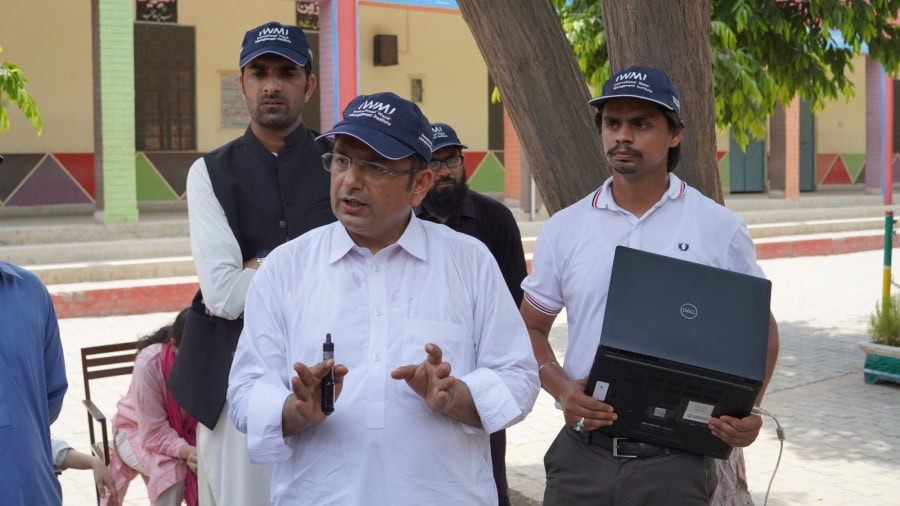OKARA – Speakers at a workshop have stressed the need of adopting climate-smart agriculture for ensuring food security and better productivity for the growers.
They highlighted the benefits of using latest equipment for ensuring judicious use of available water resources and adopting better farming practices for enhancing crop yields.
The International Water Management Institute (IWMI) Pakistan organized media exposure field visit to Okara district for improved reporting on water governance.
Dr. Habib Ullah Habib, Director – On Farm Water Management (OFWM) Research Farm (Renala Khurd), OFWM Punjab, urged the media to highlight the benefits of Laser Land Levelling, bed and furrow technology, and drip irrigation system, to promote increased crop water productivity through limited water resources. He also stressed the importance of raising awareness through media, as media being the fourth pillar of the state can significantly contribute towards raising awareness of climate smart agriculture and environmental awareness among the general public.
Dr. Jehanzeb Masud Cheema, Researcher – Water Resources Management, IWMI Pakistan, gave an overview of Water Resource Accountability in Pakistan (WRAP) Programme Component 1: Climate Resilient Solutions for Improving Water Governance (CRS-IWaG) and on-site briefing of the various interventions piloted in Okara district to improve water use efficiency, agricultural productivity, and effective management of water resources.
According to Dr. Cheema, “The automated soil moisture sensor is a cost effective and user-friendly intervention that can help farmers to learn when to irrigate crops and orchards. Under WRAP Programme Component 1: CRS-IWaG, IWMI Pakistan has installed 50 automated soil moisture sensors at various farms in Okara district to help farmers in scheduling irrigation when required and we hope that this technology will be used by other farmers as well, as they see its benefits.
Dr. Jehanzeb also briefed the media team regarding the Conductivity, Temperature and Depth (CTD) sensors installed in Okara district, in collaboration with Punjab Irrigation Department (PID). IWMI Pakistan has conducted the Principal Component Analysis (PCA) to guide PID in identifying potential groundwater monitoring sites for the deployment of CTD sensors. Through the PCA, IWMI Pakistan has recommended specific locations for the deployment of CTD divers to collect near real-time data on groundwater quality and quantity, including conductivity, temperature, and depth, to support effective groundwater management in Okara district. PID has advised their field formations to install CTD divers at new locations suggested by IWMI Pakistan, through the PCA.
Hafsa Aeman, Senior Research Officer – Geoinformatics, IWMI Pakistan, gave an on-site briefing regarding the functioning of Electrical Conductivity (EC) meter, which helps to measure water quality. According to her, “The use of EC meter can help farmers assess whether water is suitable for crops. It is important for farmers to check the water quality before irrigating crops and monitor the amount of nutrients, salts, or impurities in water.”
According to Muhammad Hasnain Abbas, Assistant Director, Water Resources Zone (WRZ), Sahiwal Irrigation Department, “The tail-end areas of Lower Bari Doab Canal (LBDC) experience limited water availability and poor water quality. The farmers in the tail-end areas of LBDC should adopt water conservation techniques in agriculture, so that they can maximize agricultural productivity within the available water resources. Media has an important role to play in this regard, by informing farmers in the tail-end areas of LBDC to avoid water wastage and cultivate low delta crops as an adaptation measure.”
A meeting with progressive farmers from Okara district was also organized to discuss irrigation and agriculture sector challenges. The participating journalists asked the farmers about how they cope with changing weather conditions and if they are receptive to new technologies. The farmers showed willingness to adopt new technologies in order to improve agricultural productivity using ‘More Crop Per Drop’ approach.










